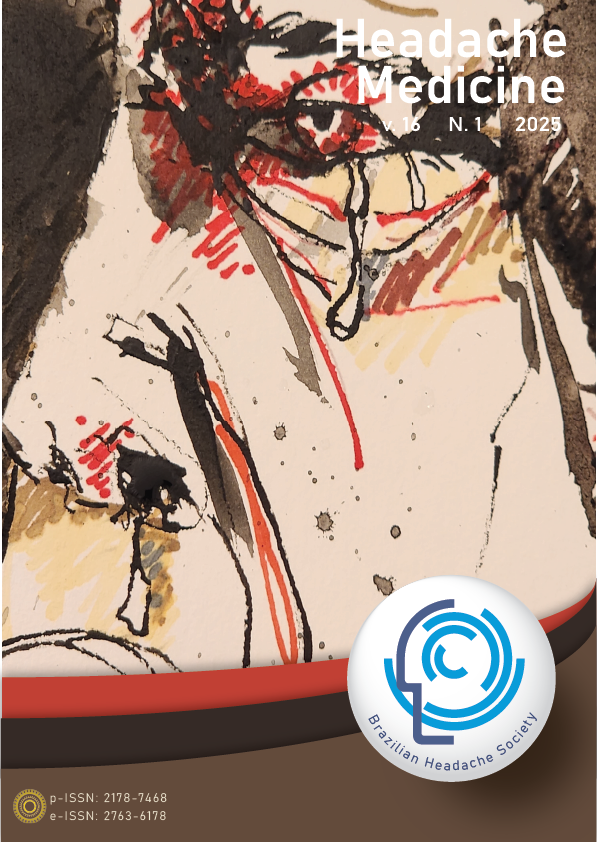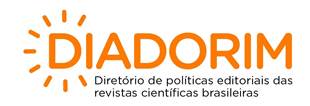Menstrual migraine in university students
Views: 553DOI:
https://doi.org/10.48208/HeadacheMed.2025.8Keywords:
Migraine, Menstrual migraine, Migraine disorder, Hormonal headache, Menstrual cycleAbstract
Introduction
Migraine is a chronic neurological disease that mostly affects women, mainly due to hormonal fluctuations during the menstrual cycle. It is estimated that menstrual migraine (MM) affects around 6% of women in reproductive age and, despite this, remains underdiagnosed, mostly due to lack of epidemiological data.
Objective
This study aims to analyze the prevalence and impacts of menstrual migraine in students at a university in the south of Santa Catarina, Brazil.
Methods
We developed a cross-sectional analytical observational study carried out with 613 female students from a university in the south of Santa Catarina. A self-administered online questionnaire was created based on the ICHD-3 migraine diagnostic criteria and the HIT-6 questionnaire, internationally validated for measuring the impacts of headaches. Furthermore, personal and sociodemographic data were collected.
Results
A prevalence of approximately 12% (n=71) of female students who met the criteria for MM was found among the 613 participants, with a mean age of 24.87 ± 6.96 years. Of these, 50.7% were using hormonal contraceptive methods, mostly combined oral contraceptives with hormone-free interval. Regarding the impacts generated by MM, 69% of the participants had a severe impact on functionality, according to the HIT-6 questionnaire, and 43.6% reported abstaining from their leisure activities approximately 1 to 4 times in the last year due to MM.
Conclusion
The results suggest that the prevalence of MM is important among the studied population and contributes to severe impacts on daily activities.
Downloads
References
Burch RC, Buse DC, Lipton RB. Migraine. Neurol Clin 2019;37:631–49. Doi:10.1016/j.ncl.2019.06.001.
Ansari T, Lagman-Bartolome AM, Monsour D, Lay C. Management of Menstrual Migraine. Curr Neurol Neurosci Rep 2020;20:45. Doi:10.1007/s11910-020-01067-x.
Cupini LM, Corbelli I, Sarchelli P. Menstrual migraine: what it is and does it matter? J Neurol 2021;268:2355–63. Doi:10.1007/s00415-020-09726-2.
Maasumi K, Tepper SJ, Kriegler JS. Menstrual Migraine and Treatment Options: Review. Headache: The Journal of Head and Face Pain 2017;57:194–208. Doi:10.1111/head.12978.
Raffaelli B, Do TP, Chaudhry BA, Ashina M, Amin FM, Ashina H. Menstrual migraine is caused by estrogen withdrawal: revisiting the evidence. J Headache Pain 2023;24:131. Doi:10.1186/s10194-023-01664-4.
Vetvik KG, MacGregor EA, Lundqvist C, Russell MB. Prevalence of menstrual migraine: A population-based study. Cephalalgia 2014;34:280–8. Doi:10.1177/0333102413507637.
Pavlović JM, Stewart WF, Bruce CA, Gorman JA, Sun H, Buse DC, et al. Burden of migraine related to menses: results from the AMPP study. J Headache Pain 2015;16:24. Doi:10.1186/s10194-015-0503-y.
Vetvik KG, MacGregor EA. Menstrual migraine: a distinct disorder needing greater recognition. Lancet Neurol 2021;20:304–15. Doi:10.1016/S1474-4422(20)30482-8.
Steiner TJ, Stovner LJ, Jensen R, Uluduz D, Katsarava Z. Migraine remains second among the world’s causes of disability, and first among young women: findings from GBD2019. J Headache Pain 2020;21:137. Doi:10.1186/s10194-020-01208-0.
Vos T, Allen C, Arora M, Barber RM, Bhutta ZA, Brown A, et al. Global, regional, and national incidence, prevalence, and years lived with disability for 310 diseases and injuries, 1990–2015: a systematic analysis for the Global Burden of Disease Study 2015. The Lancet 2016;388:1545–602. Doi:10.1016/S0140-6736(16)31678-6.
Headache Classification Committee of the International Headache Society (IHS) The International Classification of Headache Disorders, 3rd edition. Cephalalgia 2018;38:1–211. Doi:10.1177/0333102417738202.
Kosinski M, Bayliss MS, Bjorner JB, Ware Jr. JE, Garber WH, Batenhorst A, et al. A six-item short-form survey for measuring headache impact: the HIT-6. Quality of Life Research 2003;12:963–74. Doi:10.1023/A:1026119331193.
Gandek B, Alacoque J, Uzun V, Andrew‐Hobbs M, Davis K. Translating the Short-Form Headache Impact Test (HIT-6) in 27 countries: methodological and conceptual issues. Quality of Life Research 2003;12:975–9. Doi:10.1023/A:1026171315263.
Pradela J, Bevilaqua‐Grossi D, Chaves TC, Dach F, Carvalho GF. Measurement properties of the Headache Impact Test (HIT‐6TM Brazil) in primary and secondary headaches. Headache: The Journal of Head and Face Pain 2021;61:527–35. Doi:10.1111/head.14049.
Gaul C, Diener H-C, Danesch U. Improvement of migraine symptoms with a proprietary supplement containing riboflavin, magnesium and Q10: a randomized, placebo-controlled, double-blind, multicenter trial. J Headache Pain 2015;16:32. Doi:10.1186/s10194-015-0516-6.
Carman KB, Arslantas D, Unsal A, Atay E, Ocal EE, Demirtas Z, et al. Menstruation‐related headache in adolescents: Point prevalence and associated factors. Pediatrics International 2018;60:576–80. Doi:10.1111/ped.13572.
Fernández-Martínez E, Onieva-Zafra MD(. MD, Abreu-Sánchez A, González-Sanz JD, Iglesias-López MT, Fernández-Muñoz JJ, et al. Menstrual Migraine Among Spanish University Students. J Pediatr Nurs 2021;56:e1–6. Doi:10.1016/j.pedn.2020.06.013.
De Leo V, Scolaro V, Musacchio MC, Di Sabatino A, Morgante G, Cianci A. Combined oral contraceptives in women with menstrual migraine without aura. Fertil Steril 2011;96:917–20. Doi:10.1016/j.fertnstert.2011.07.1089.
Nappi R, Tiranini L, Sacco S, De Matteis E, De Icco R, Tassorelli C. Role of Estrogens in Menstrual Migraine. Cells 2022;11:1355. Doi:10.3390/cells11081355.
van Casteren DS, Verhagen IE, van der Arend BWH, van Zwet EW, MaassenVanDenBrink A, Terwindt GM. Comparing Perimenstrual and Nonperimenstrual Migraine Attacks Using an e-Diary. Neurology 2021;97. Doi:10.1212/WNL.0000000000012723.
Downloads
Published
How to Cite
Issue
Section
License
Copyright (c) 2025 Isabela Montegutti Coan, Maria Luiza Del Prato Hoffmann, Tatiana Pizzolotto Bruch (Author)

This work is licensed under a Creative Commons Attribution 4.0 International License.












